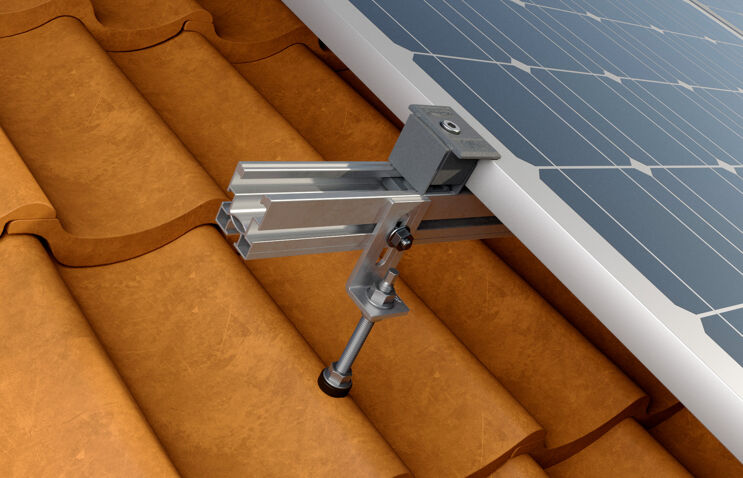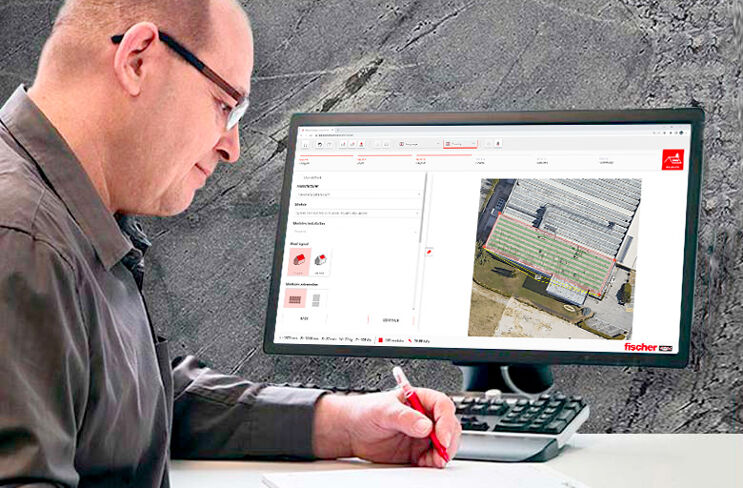The systems for mounting solar panels on tiles, shingles and slate allow for module installation on different types of pitched roofs, with or without ventilation battens, thanks to a comprehensive range of hooks and screws.
Whether it's residential or commercial buildings, the solar product catalog offers solutions that allow for the safe and efficient installation of photovoltaic modules. Hooks, clamps, rails, brackets and accessories provide maximum flexibility without compromising the original roof structure, with the added benefit of harnessing clean solar energy
Discover all of fischer's solar panels mounting systems.
The aluminum hooks are designed to be lightweight and durable. Their high load-carrying capacity allows for increased spacing and a reduction in the number of required fastenings. Engineered for controlled deformation to prevent damage to the roofing material, these hooks are made from high-performance aluminum, making them easy to transport on the roof and resistant to weather conditions. Stainless steel hooks are designed to facilitate the installation of solar panels on sloped roofs and are suitable when there's no need to grind the tiles .
Discover the products
Double-threaded screws with sealing gaskets allow for direct fastening to the roof and are ideal for pitched roofs with non-removable clay or concrete tiles. Installation involves drilling through the roof covering, inserting the screw and securing the support structure with special connecting brackets. To ensure proper waterproofing, a bituminous sealant is applied at the drilling points.

SOLARPANEL-FIX is an Online module of the FiXperience Suite for the design of mounting systems for photovoltaic panels: it supports professionals in the design of the photovoltaic substructure through a clear and logical flow.
The software allows to automatically calculate the actions of snow and wind loads through the geolocation of the construction site, according to the requirements of the European Standard EN 1991 (Eurocode 1). In addition, it allows to download the bill of materials to create the substructure, the installation plan and a technical report. The latter outlines the structural checks of the system parts, according to the European Standards EN 1993 (Eurocode 3), EN 1999 (Eurocode 9) and according to fischer specifications.
